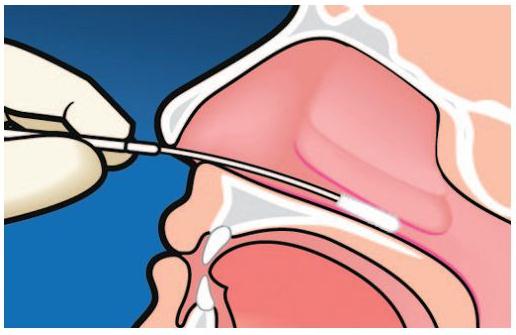The Function of Nasal Swab in Curing Lung Cancer
September 11, 2020
Lung injury or solitary pulmonary nodules are lung lesions that may be detected by some patients when X-rays are detected for some reason. Although doctors often worry about the possibility of cancer when they find a lesion, in fact most of these lung injuries are benign. For example, in the national lung cancer screening trial, 25% of all patients who were screened using computed tomography (CT) had lung injury, but about 95% of these cases were eventually found to be benign. Therefore, these invasive diagnostic procedures are often unnecessary in patients with low lung cancer risk. So, is there a simpler and non-invasive way to detect lung cancer? Recently, a new study from Boston University School of Medicine (BUSM) found an invasive, low-cost, and more convenient way to diagnose lung cancer. The results of this study were published in the Journal of the National Cancer Institute.

As the authors of this new study point out, many patients who are ultimately diagnosed as benign have undergone invasive medical procedures, such as surgical lung biopsy. But the study found a genomic tool that allows doctors to tell patients whether they have a malignant lesion by simply using a nasal swab.

Nasal swab collection sample
Nasal epithelium has lung cancer biomarkers
BUSM researchers collected nasal epithelial swabs from patients who were assessed for lung lesions. These participants are people who are smoking or have smoked. Scientists examine these nasal swabs and analyze the gene expression of the participants by using microarrays, a genetic tool commonly used to detect genetic mutations.
The researchers found that cancer-related gene expression changed in a similar manner at two airway locations. Therefore, they believe that the nasal airway epithelial cells in the smoked population extend to the nose, and there may be biomarkers of lung cancer on the nasal swab.
Dr. Marc Lenburg, a medical professor at BUSM and co-senior author of the study, explained the significance of the study: "Our findings clearly demonstrate the presence of cancer-related airway damage and can be detected in the nasal epithelium. It was found that nasal epithelial gene expression can reveal the cancer status of patients independently of standard clinical risk factors, suggesting that nasal epithelial gene expression may contribute to lung cancer detection, and that such nasal samples can be collected by non-invasive, easy-to-use devices."
